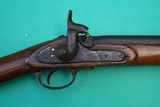 |
 |
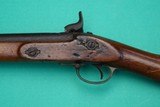 |
 |
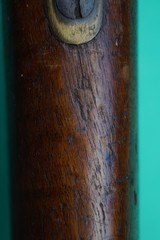 |
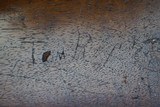 |
 |
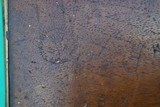 |
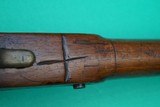 |
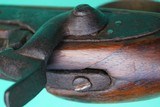 |
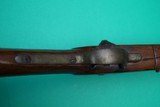 |
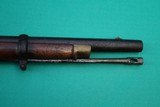 |
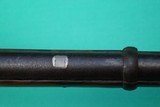 |
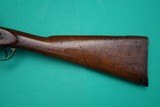 |
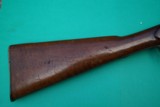 |
 |

Confederate Civil War Pattern 1853 P53 Tower Enfield 3 Band Rifled Musket
Guns International #: 101498371 Seller's Inventory #:
Category: Civil War Rifles - Antique Rifles - Percussion
Seller's Information
When emailing or calling sellers direct, please mention that you saw their listing on GunsInternational.com
Seller: Brent Wilburn
Company: Antique Arms, Inc.
Member Since: 11/19/15
First Name: Brent
Last Name: Wilburn
State: Georgia
Zip: 30052
Country: United States
Phone: (678) 471-1432
Phone2: (678) 471-1432
Number of Active Listings: 0
Total Number of Listings: 599
Seller: Private Seller
Return Policy: 3 day inspection and return policy on used guns.
Payment Types Accepted: Money Order, Certified Check
Description:
This is an old P53 Enfield War Horse that was brought into the South through the Union Blockade that has seen A LOT of action. This rifle came out of a local estate here in Georgia and was found in the South years ago by the current owner's Grandfather. Standard 39" Barrel secured by 3 Bands and Brass Furniture. The lock is marked Tower 1862 with the typical Double Birmingham 25 Gauge Proofs on side of the Barrel. It has a good clean Birmingham Small Arms Trade Roundel on the right side of the stock along with the original soldiers named scribed beside it. The Birmingham Small Arms Trade was made up of many gunsmiths and specialists who probably built close to 750,000 Enfields for the Union and the Confederacy during the Civil War. They typically constructed these through a European style guild system that was set up like a pyramid and comprised of various tradesmen making parts, castings, wood blanks, etc From there, the parts were passed up to another small army of fitters, filers, etc and so on until they had a finished product. Often, various names and initials of the various Birmingham jobbers and small shops will be found stamped inside the parts with the name of the General Contractor stamped in plain view on the bottom of the stock. The names and initials probably helped account for who did what when it came time for payment. In the case of this rifle, the General Contractor is "T. Turner" who was one of the fairly larger Birmingham Contractors. From there, the various General Contractors sent their Enfields to a Purchasing Agent who could be acting on the behalf of the United States, The Confederacy, or in some cases, BOTH! Others were simply private investors. Often, the Confederates hired viewers to inspect the arms they purchased and this rifle has a viewer stamp on top of the wood in front of the buttplate. I am tempted to say this one has a Confederate Anchor S Viewer's marking because I can see what appears to be the anchor...I just can't read the letter underneath clearly enough and most Anchor S marked Enfields I've seen are typically 1863 or 1864 dated. It could be something else altogether but the reason I know this is Confederate is really more from the severe wear this rifle shows and the Confederate Grafitti on the stock which includes the name of the soldier. The sights were also removed at some point which was another fad of the Confederates as their officers placed great mistrust on their soldiers ability to use graduated ladder sights properly in the heat of battle. On this Enfield a small V rear sight block was installed like a Kentucky Rifle...which has since been lost or removed. Typical of many Confederate Enfields I've seen over the past 30 years,the corrosion and erosion around the bolster is severe. It's probably due to a combination of the Confederates firing their weapons more and with percussion caps made out of something highly corrosive. There is a contomporary splice repair to the wood over the top of the lockplate where the original top section of wood behind the bolster burnt off from spark erosion. Union Enfields just don't show this degree of damage and while Union Soldiers occasionally broke ranks and put their initials or names on their rifles, this practice was not tolerated by Union Officers who regarded it as destruction of property...and I've seen enough must Union Muster records where soldiers got docked their pay for the replacement cost of a weapon they damaged or lost. In contrast, the Enfield was THE BEST RIFLE a Confederate Soldier could hope to get his hands on...especially in the first half of the war when quantities were limited. Given the disparity of arms between various companies and regiments (some of which were armed with double barrel shotguns, their own squirrel rifles, or old flintlocks into 1862), Confederates boldly put their mark or their name upon a highly prized Enfield as proof it belonged to them. I imagine this lesson was learned quickly as these came in through the blockade. You would not believe the war of correspondance that went on and on in the Confederacy when a ship carrying Enfields made it through the blockade and docked in a Southern Port. There were some pretty interesting fights that went on between local militias who confiscated them for themselves near those ports, Governors of States who had the Central Confederate Gov't in Richmond steal their shipments, and high-ranking General who fought tooth and nail to get these Enfields into the hands of their troops from Virginia to Tennessee. One can only imagine the fights that occured within the ranks and the fact that these Enfields always seem to have a name, set of initials, etc. scratched into the wood. If you didn't, you likely had no way of proving it was yours when you woke up one morning and found it missing. Sometimes you will even find these where the name was filed off and another one put in on top of it. All I can tell you about this rifle is that the soldier who carried this was named Tom and his last name started with an "R". I've studied his last name for hours and it appears to be something like Roper, Ripley, Raper, or Ragley. I did find a Thomas Raper in the 62nd Tennessee Mounted Infantry and a Thomas Ragley in the 25th Battalion Virginia Infrantry. This having turned up in Georgia, I wouldn't be surprised if this rifle was used by a soldier in Johnston's or Hood's Army of the Tennessee which defended Atlanta in 1864 against Sherman. There also were numerous Thomas Ropers and 3 or 4 Thomas Ripleys who were all Confederate. With some careful study, it may be possible to identify this soldier which would greatly add to the value of this rifle but I just don't have enough confidence to categorically state it was this or that one particular soldier. I just know his name was "Tom R-something". Overall, this rifle is in Fair Condition with the metal having turned to a dark brown crusty patina....another feature of a rifle that's come from the humid Southern climate while the wood stays fairly nice. Expect some pretty heavy pitting and corrosion around the nipple, bolster, and back of the barrel. The nipple has been replaced. Sling swivels were removed and I suspect following the war, this Enfield was used by a returning soldier as a shotgun on a farm. The original .577" Bore is now about .62 Caliber. Fortunately, it was not cut down like many after the war as the barrel is still 39" and the stock is full length with all 3 bands intact. Wood appears solid overall with no major breaks but some dings and small cracks and some small holes. The BSAT and Contractors name are good and this wood does not appear to have been sanded...perhaps a coat of varnish added over the existing finish sometime in the past which can be safelly removed with a little acetone if desired. The lock works on full and half clock. The ramrod is an original Civil War Enfield Rod but a few inches short near the end. All in all, a typical example of a Confederate used Enfield and one thing is for sure; this rifle was not pulling guard duty well behind the lines. It likely stayed in constant use on the front lines.....it has so much firing wear on it.
SOLD
Antique: Yes
Manufacturer: Tower Birmingham Small Arms Trade
Manufacture Date: 1862